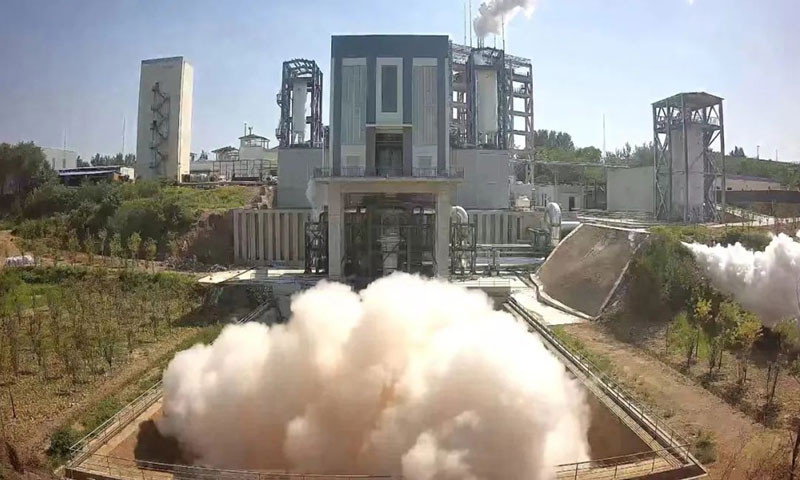It is reported that China has tested for the first time under “real” conditions a liquid-fueled vacuum rocket engine for the manned stage of a future launch vehicle for the lunar program. The engine operated for “a thousand” seconds, proving reliability and controllability, which brought the country one step closer to delivering people to the Moon.

Image source: China Aerospace Science and Technology Corporation
The tests took place in a new complex for high-altitude testing of rocket engines, commissioned in May 2024. It is claimed to be Asia’s largest test facility for comprehensive testing of rocket engines at various altitudes, including vacuum (with a pressure not exceeding 1 kPa or 0.0098 atm). It appears that a static-burn-tested vacuum engine for a future lunar rocket has become the first object to be tested there.
The engine ran on oxygen/hydrogen steam. Its performance characteristics satisfied the designers. Also in May of this year, quad liquid rocket engines YF-100K (kerosene/oxygen fuel) were tested at another complex. These engines will operate in the atmosphere as part of the first stage of the future lunar rocket “Changzheng-10” in the amount of 7 pieces and in two side accelerators, also 7 pieces each. The Long March 10 rocket can launch up to 70 tons of payload into low-Earth orbit and up to 27 tons into lunar orbit.
The first test flight of the Long March 10 rocket is expected in 2027. Successful testing of engines for all stages allows us to hope that this schedule will be respected.